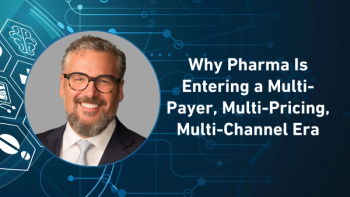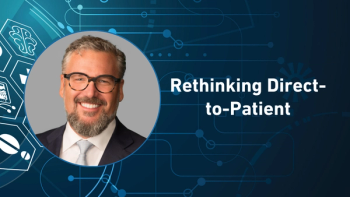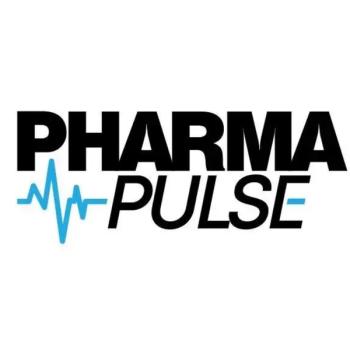
- Pharmaceutical Commerce - December 2022
- Volume 17
- Issue 6
Pharma and RWE: Hitting Its Stride
Stakeholders are investing heavily in their ability to curate appropriate data sets and devise advanced data-analytics capabilities to harness real-world evidence (RWE) across the entire pharma lifecycle—from drug discovery and development through product launch and commercialization
Efforts to leverage the valuable insights surfaced from real-world evidence (RWE) throughout the biopharmaceutical and healthcare sectors have skyrocketed in recent years—and for good reason. Two parallel factors are enabling this trend.
- Growth in the number of real-world data (RWD) sources that are developed during the course of routine patient care.
- Ongoing advances in both data-extraction tools and data-analytics capabilities based on artificial intelligence (AI), machine learning (ML) and natural language processing (NLP), and other modeling and simulation methodologies.
All of this has kicked the doors wide open, ushering in a new era for high-quality, regulatory-grade RWE, growing trust in the process and increasing support from many regulatory bodies.
Historically, three primary sources of RWD have been the focal point for analyses to create RWE—electronic health record (EHR) data, medical and pharmacy claims data, and published literature. But more recently, additional data sources have demonstrated their value in helping to create richer RWE insights, by more fully capturing the patient experience as they manage their medical conditions in the face of available or non-existent treatment options. They include:
- Aggregated clinical laboratory-testing and genomics data.
- Digital patient-generated health data (PGHD) that is collected from in-home, mobile, and wearable devices.
- Data captured in patient and product registries.
- Patient-reported outcomes (PRO).
“In recent years, RWE has exploded in terms of what it can tell us, and how it can support and supplement randomized controlled trials (RCTs). Importantly, trust in the use of RWE has also expanded, which opens up many new possibilities,” says Christina Mack, chief scientific officer, RWE, for IQVIA Real World Solutions. “Where it was once a novelty, RWE is now baked into most conversations with our clients these days, and it’s no longer seen as a special case.”
RWE is now helping stakeholders to advance critical objectives in all phases of the drug discovery, development, and commercialization lifecycle. These include:
- Aiding internal decision-making on portfolio development.
- Improving clinical trial design (by, for instance, improving selection of appropriate endpoints, surrogate endpoints, and trial duration), as well as goal-setting for trial diversity and patient enrollment.
- Elucidating the disease incidence, prevalence, natural history, and disease burden of the target indications.
- Informing clinical practice by closing evidence gaps that remain after the clinical trial.
- Supporting initial regulatory approval submissions and approval of post-marketing label/indication expansions by adding critical context to trial data.
- Enabling data-informed negotiations with regard to drug pricing, formulary placement, and performance-based contracts with payers (thereby removing barriers to access for today’s advanced and high-cost therapies).
“RWE that could be based on thousands or millions of patient records provides a goldmine to support your regulatory submission and build out your therapy’s overall value story,” says Nandini Hadker, partner and head of evidence strategy for Trinity Life Sciences. “Pre-launch, companies can demonstrate unmet need by developing RWE to identify gaps in the current care paradigm. Post-launch, companies can develop RWE to help quantify their product’s performance compared to competitor products across a number of dimensions. Both types of findings are of significant interest to regulatory bodies, payers and physicians.”
Combined together, these insights can be integral to constructing the value proposition of a particular treatment. “RWE studies that can help stakeholders to better understand the burden of disease can be used to demonstrate the full economic impact of the disease and the specific clinical interventions on both the patient and the health plan," says Mack. She believes the potential of novel high-cost therapeutics to offset healthcare costs should be brought to light during negotiations between drug developers and payers.
“Similarly, as a drug sponsor, you should be engaging with regulators as early as possible to demonstrate to FDA that your strategically and scientifically sound approach is the best way to meet unmet clinical need,” adds Won Chan Lee, principal and head of Axtria’s health economics and outcomes research (HEOR)/RWE practice.
Recently, there has been increasingly vocal, top-down support from FDA and other global regulators, and the number of regulatory approvals that were based entirely or in part on RWE presented by sponsors has continued to grow. In October, FDA announced that it would begin accepting applications into its new Advancing Real-World Evidence Program.1 FDA's new program “provides sponsors ... the opportunity to meet with agency staff—before protocol development or study initiation—to discuss the use of RWE in medical product development,” says the agency.
“FDA’s new program is huge,” adds Anissa Cyhaniuk, senior vice president, RWE, for EVERSANA. “It reinforces the agency’s commitment to finding situations where RWE can provide efficacy data, and we’ve seen early work here across many extensions in different disease states and age groups, including pediatric and rare diseases.”
Putting RWE to work earlier in drug lifecycle
In the early days, RWE was primarily used to satisfy post-marketing requirements and address evidence gaps that remain after RCT data is submitted to regulators, points out John Doyle, group vice president of health sciences at Exponent, and adjunct assistant professor in the department of epidemiology, Mailman School of Public Health at Columbia University. But in recent years, he adds, the RWE framework is being applied to the drug-development process much earlier, shaping how the trial is designed and executed and how the regulatory submission package is developed. “When it comes to drug-discovery efforts for orphan drugs, biomarker-directed therapies for specific subsets of patients in oncology and other diseases, and highly personalized cell and gene therapies (CGTs), sponsors and regulatory agencies are aligned in their willingness to consider conditional approval based on smaller trial populations—but then working to validate the long-term safety and effectiveness profile of the approved therapy and evaluate its benefit-to-risk ratio in a larger, more diverse cohort of real-world patients over longer-time horizons,” says Doyle.
In a recently published analysis of FDA’s new oncology drug approvals in 2020,2 investigators found that most initial cancer drug approvals are based on a single, non-randomized trial design using surrogate endpoints. “Specifically, 17 of the oncology drugs accounted for 18 pivotal trials; 13 of them (72.2%) used historical control, only six of them (35.3%) had a randomized component, and the majority (17) used a surrogate endpoint as a primary endpoint (94.4%),” explains Javier Jimenez, chief medical officer, Flatiron Health, a cancer-focused technology and services company. “The ongoing evolution in the complexity of today’s new medicines—now including biologicals, [CGTs], and targeted therapies aimed at rare populations—will increase the need for post-marketing evidence generation derived from RWD.”
Follow-up studies are particularly important in the realm of CGTs, many of which are considered to be potentially curative for a wide range of chronic or deadly diseases. “The sponsor may not be able to validate a CGT’s ‘cure’ in a pre-market trial of limited scope and duration, so they must carry out longer-term studies to develop valid, reliable, and durable RWE that verifies the full clinical value of these breakthrough therapies over time,” says Doyle.
Much earlier in the development lifecycle, the use of RWE to support pre-launch efforts is being used in three ways, explains Nagasubramanya Nabha, assistant vice president of data science for Trinity Life Sciences. They include developing look-alike models that identify favorable patient populations; identifying early adopters among healthcare professionals; and developing healthcare segmentation to enable more focused messaging and value communication.
“RWE strategies can help sponsors explore different possible endpoints, different patient subgroups, and different expressions of the disease based on biomarker stratification,” adds Anila Dede, executive director, RWE solutions for Syneos Health. “You can find these critical signals if the data set is big enough and diverse enough.”
Tapping into more varied data sources
Today, there is growing effort to integrate multiple linked data sources to enable deeper evidentiary insights. “EHR data will always be valuable to help answer a lot of questions, but it still needs to be supplemented with other data sources,” says Mack of IQVIA. “The ability to appropriately curate the RWD from multiple sources to augment the analyses—that’s where the magic happens.”
“Many feasibility studies attempt to leverage EHR and claims data but are then unable to fully define the target patient condition and/or clinical context within the available data,” adds Adrienne Lovink, partner and co-leader of Trinity’s RWE function. “Claims data often lacks specificity, and much of the relevant information that resides in EHR systems is in the form of harder-to-access unstructured data.”
The growing ability today to use NLP to mine the unstructured data that is found in physician notes within the EHR system is particularly important “because so often, the codes used in the structured EHR data are not nuanced enough—nor do they exist for a new category of disease for which the manufacturer is pursuing a therapy—to correctly identify particular patients, so text mining using NLP can help to identify hidden patients,” says Lee of Axtria.
In a recent study completed with one of its pharma clients, IQVIA used NLP and ML to analyze clinical information found in both structured and unstructured EHR data to identify a particular subset of asthma patients. “The findings led to a 30% increase in the ability to identify uncontrolled asthma, and a 17% reduction in uncontrolled respiratory diseases, by helping doctors to accurately diagnose patients, initiate the right therapy more quickly, and track patients to ensure improved outcomes,” explains Mack.
Similarly, imaging data created during routine healthcare also remains an important, albeit untapped resource that can be mined to support drug discovery and development. “The ability to train computer models to understand and analyze clinical pathology images, match insights from malignant tumors, and marry those insights with data related to patient outcomes and genetic profiling can provide critical insights to improve trial recruitment and treatment,” says Dede.
Lovink believes that in several disease areas, particularly oncology, it is hard to reasonably characterize a patient’s clinical condition without imaging data. “However, imaging data has traditionally been difficult to locate, retrieve, view, de-identify, and normalize at scale," she notes. "Recognizing that imaging is one of the most important and critical clinical endpoints for many therapies, I expect the emerging companies will continue to advance these capabilities and eventually change the data landscape.”
Meanwhile, according to Lee, two particularly rich sources of RWD—PRO and digital health data from wearable devices—are just starting to be appreciated and utilized, and can enable deeper insights into drug adherence, side effects, and adverse events (which are important for managing chronic conditions), offering a path forward to improved patient care. For example, RWE related to treatment patterns, persistence, adherence, and change in treatment can help run trials more efficiently by reducing their duration, cost, and burden on patients.
Biomarkers offer a treasure trove to be mined
Today, the number of approved biomarker-directed therapies continues to grow. One recent paper3 analyzed the US-based de-identified Flatiron Health-Foundation Medicine clinicogenomic database and was able to systematically identify 458 mutations “that predict the survival of patients on specific immunotherapies, chemotherapy agents, or targeted therapies,” says Jimenez. “The research spanned across eight common cancer types, allowing for the generation of insights and hypotheses in mutation–treatment interactions and mutation–mutation interactions that can be used to guide new targeted cancer therapy development.”
In the coming years, the practice of routinely sequencing patients for a panel of targeted mutations is expected to grow. However, it is notable that the remaining mutations from any broad panel screening, which are captured in the patient’s EHR profile may not necessarily be relevant today to inform therapy selection, experts contend. "But such data can be studied on an aggregate level to help drug sponsors better understand how patients with particular mutations are faring on their existing prescribed therapies,” notes Viraj Narayanan, chief commercial officer for Ontada, an oncology real-world evidence, technology, and insights business of McKesson. “Efforts to carry out RWE studies that pair genomic data with outcomes data can then help to inform ongoing development efforts in the pursuit of biomarker-related therapies.”
However, one barrier is the fact that many clinicians are not yet routinely running comprehensive biomarker profiling upfront, adds Narayanan. Ontada, he says, is working with another McKesson unit, The US Oncology Network, to address this problem by developing educational outreach and digital tools to incorporate biomarker testing more smoothly into the physician’s workflow.
Using RWE to inform payer considerations
“The preliminary cost of a drug and its budget impact on any health plan can be refined and articulated over time by carrying out comparative effectiveness studies based on RWE once the drug has launched," explains Lee. "This is particularly important for any drug that is entering a crowded therapeutic space. Then you can go back to the payers and renegotiate pricing and formulary tier to maximize patient access.”
RWE also plays a role in clarifying budget impact and cost-effectiveness models for payers. “For example, studies involving RWD can help to identify which subgroups of patients within a given indication account for the highest cost, which one shows the greatest benefit from the treatment, and so on,” says Cyhaniuk. “We can then provide payers with a better understanding of how large these respective groups may be, thereby driving more-informed decision-making and linking clinical effect with cost.”
Axtria recently carried out a study using an approach called prevalence-based budget impact modeling (BIM) to demonstrate the value and affordability of the insulin biosimilar glargine (Gla-300) over basal insulins for treating type 2 diabetes. The study4 showed that redistributing the market share (by switching patients) from first-generation to second-generation basal insulins, along with increasing market share of glargine biosimilars over the years, demonstrated incremental cost reductions over time thanks to increased utilization of second-generation basal insulins. “We look forward to the findings to help guide decision-makers in terms of formulary placement and utilization controls,” says Lee.
In the US, “RWE provides an avenue to continue discussions with payers and to inform the most appropriate management of a product, but to be successful it must be coupled with other strategies, such as innovative and traditional contracting arrangements,” adds Monica Martin de Bustamante, senior partner and head of evidence, value, access, and pricing for Trinity Life Sciences. “Thinking through the best outcomes to capture, the methodology to deploy, and how else to supplement these data upon submission is key for success.”
Use cases: Supporting regulatory submissions
The growing number of scenarios in which RWE has played a pivotal role in regulatory approval or label expansion are making headlines. A few examples are discussed here:
- In May 2022, Novartis received approval from the European Medicines Agency (EMA) for the approval of Kymriah (tisagenleceleucel), a CAR-T cell therapy for treatment of adult patients with relapsed or refractory follicular lymphoma.5 This approval was noteworthy, says Jimenez, because it was based on a single-arm trial, plus two studies based on RWD—a retrospective chart review of US and EU patients, and a non-interventional study using Flatiron Health data. Jimenez notes, “While EMA flagged some limitations with the RWD, the agency ultimately said the studies provided valuable context and were generally deemed supportive of the pivotal study, due to the clear differences in outcomes they show.”
- Trinity Life Sciences conducted a real-world study using a chart audit to study the off-label use of a product for one pharma client. “We were able to demonstrate that the product was producing improved clinical outcomes for a particular subpopulation,” says Hadker. “This finding was pure gold because it showed the drug was able to address a population with high unmet need. The effort helped our client to de-risk its expensive and risky RCT, and drive multiple scientific publications. Today, the company has an expanded label.”
- A similar effort bore fruit in 2019, when Pfizer was able to use RWE as a primary source of evidence to support the FDA label expansion of its breast cancer therapy Ibrance (palbociclib) for the treatment of males with hormone receptor-positive (HR+), human epidermal growth factor receptor 2-negative (HER2-) advanced or metastatic breast cancer. The expanded US approval relied solely on an RWE study of off-label use of Ibrance in male patients.
- The first-in-class tropomyosin receptor kinase (TRK) inhibitor Vitrakvi (larotrectinib) from Bayer and Loxo Oncology received the second-ever “pan-tumor” approval from FDA based on the high overall response rate 75% in a small clinical study6 of real-world patient cohort data from off-label use involving 55 patients with 17 different tumor types. “Neurotrophic tropomyosin receptor kinase (NTRK) gene fusions drive oncogenesis in a small subset of solid tumors, with estimated US annual cases number roughly 3,000,” explains Dede. “The use of EHR data enabled real-world patients with NTRK-mutant tumors (an exceedingly rare population) to be identified from a geographically diverse clinic-genomic database.”
- RWD from Flatiron Health recently supported FDA approval of a supplemental biologics license application for Erbitux (cetuximab) from Eli Lilly.7 This approval provides a new, biweekly dosing regimen for the drug's indicated use in patients with certain forms of metastatic colorectal cancer or squamous cell carcinoma of the head and neck—significantly reducing the frequency of patient visits to an infusion center, a particular benefit for those with advanced cancer, says Jimenez.
- In July 2021, FDA approved a new use for Prograf (tacrolimus) from Astellas, based on an observational study providing RWE of effectiveness.8 Originally approved to prevent organ rejection in patients receiving liver transplants, the drug was later approved to prevent organ rejection for kidney, heart, and lung transplants.
- In April 2022, FDA granted accelerated approval to Novartis’ Vijoice (alpelisib) as the first and only drug indicated for select patients with PIK3CA-related overgrowth spectrum (PROS), a spectrum of rare conditions characterized by atypical overgrowths and anomalies in blood vessels, the lymphatic system, and other tissues. The approval was based solely on RWE developed from a retrospective chart review of just 57 patients, according to the company.9 To validate the clinical findings across a broader cohort of patients, Novartis is now carrying out additional clinical trials, and a follow-up trial involving patients from the initial study.
“Today, drug sponsors can and should proactively engage with all payers and with regulators in a parallel process informed by patients’ and providers’ input, as early as possible to investigate what types of RWE would be most meaningful to support approval and enhance coverage of the medication,” says Doyle.
Ontada's Narayanan notes that these efforts, on a broad scale, are providing real opportunities to change the course of healthcare by accelerating drug development and eliminating the evidence gaps that exist between drug approval and real-world care. “We’re on a maturity curve here, and we’re still in early days," he says. "While we’re making important strides, there is still a lot of untapped opportunity.”
References
1. US Food and Drug Administration press release, Oct. 19, 2022, Advancing Real-World Evidence Program;
2. Mitra-Majumdar, Mayookha, et al.,Analysis of Supportive Evidence for U.S. Food and Drug Administration Approvals of Novel Drugs in 2020, JAMA Netw Open. 2022;5(5):e2212454. doi:10.1001/jamanetworkopen.2022.12454;
3. Liu, Ruishan, et al., Systematic Pan-Cancer Analysis of Mutation-Treatment Interactions Using Large Real-World Clincogenomics Data, Nature Medicine, 28, 1656-1661, 2022;
4. Ponomareva, E., et al., The Economic Value Of Insulin Glargine 300 U/Ml (GLA-300) In People ≥18 Years of Age With Type 2 Diabetes Mellitus: A Value-based Economic Model From A U.S. Payer Perspective; ISPOR, 2022;
5. Novartis press release, Novartis Kymriah receives EC approval as first CAR-T cell therapy for adults with relapsed or refractory follicular lymphoma, May 4, 2022.;
6. Miksad, R.A., et al., Small But Mighty: The Use of Real-World Evidence to Inform Precision Medicine, Clin Pharmacol Ther. July 2019; 106(1): 87–90;
7. Flatiron press release, Flatiron Health Real-World Data Support FDA Approval of New Dosing Regimen for Erbitux (cetuximab), July 20, 2021;
8. FDA press release, FDA approves new use of transplant drug based on real-world evidence (RWE), July 16, 2021;
9. Novartis press release, April 6, 2022, FDA approves Novartis Vijoice (albelisib) as first and only treatment for select patients with PIK3CA-Related Overgrowth Spectrum (PROS);
Articles in this issue
about 3 years ago
Pharmaceutical Commerce - December 2022 Issue (PDF)about 3 years ago
Sustainability: Its Importance Can't Be Ignoredabout 3 years ago
The IRA is Industry's Wake-up Callabout 3 years ago
'Next-Best-Action' for Data Analyticsabout 3 years ago
The Value of ML in Customer Targetingabout 3 years ago
Patient Data: Solving Ownership Questionabout 3 years ago
Succeeding with Fit-for-Purpose AIover 3 years ago
Creating the Internet of Supply ChainsNewsletter
Stay ahead in the life sciences industry with Pharmaceutical Commerce, the latest news, trends, and strategies in drug distribution, commercialization, and market access.




